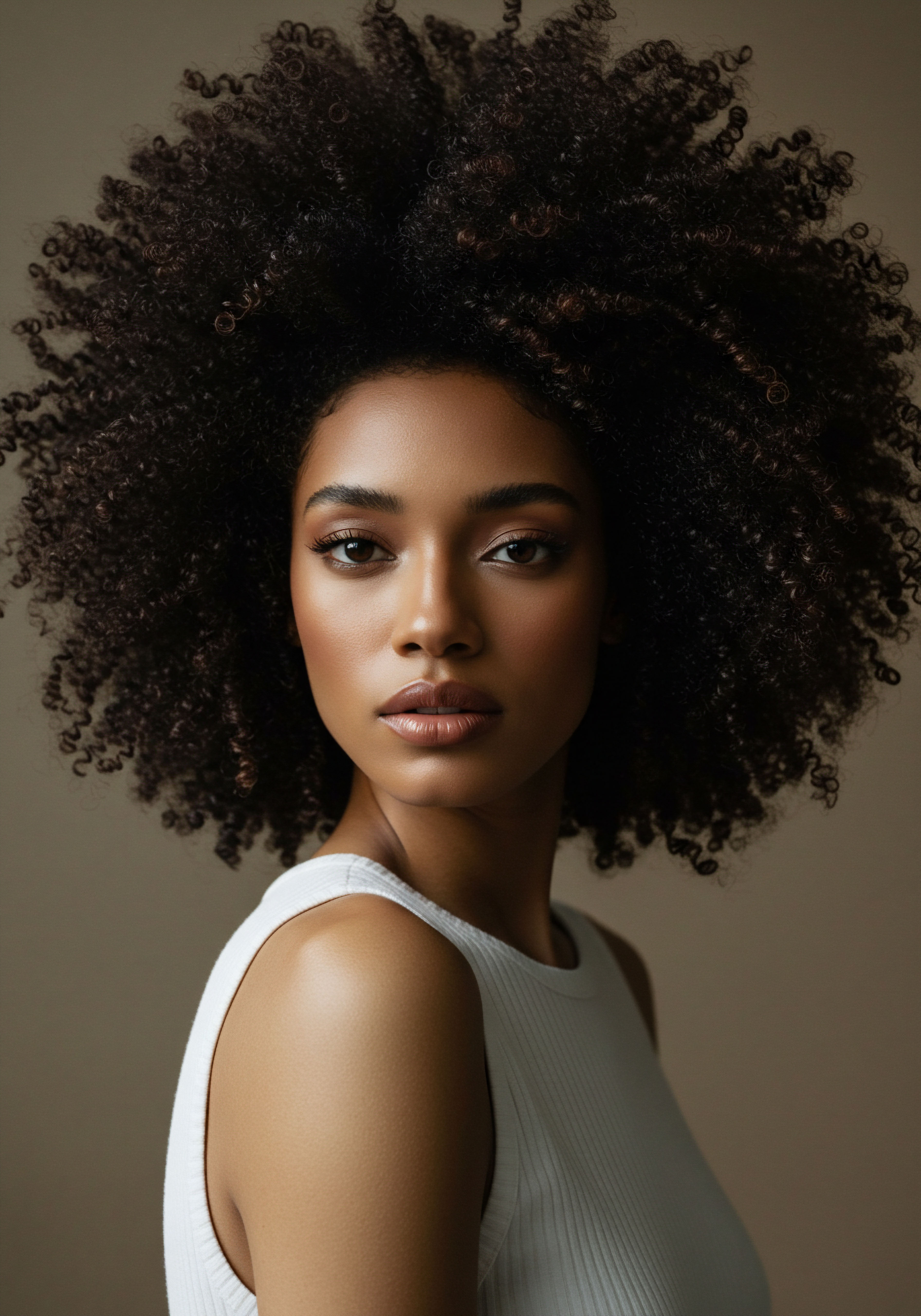
Fundamentals
The delicate strands adorning our heads carry more than just aesthetic appeal; they are imbued with layers of history, culture, and societal expectation. When we speak of Historical Hair Standards, we are inviting a contemplation of the prevailing ideals, conventions, and unspoken rules that have governed hair across different eras and cultures. This designation extends beyond mere fashion trends, reaching into the profound social and psychological significance attributed to hair, often shaping identity and perception. For Roothea, this exploration centers particularly on textured hair, the rich legacy of Black hair, and the unique experiences of mixed-race hair, acknowledging how these historical directives have frequently intersected with narratives of belonging, resistance, and self-expression.
Understanding the historical interpretation of hair norms offers a lens through which to view how communities, over centuries, defined beauty, status, and even morality through follicular expression. From ancient civilizations where specific styles denoted social rank or spiritual devotion, to more recent periods where hair conformity became a tool of assimilation, these standards have always carried considerable weight. For those with coils, kinks, and waves, this historical meaning often presents a complex legacy, where inherent textures were frequently marginalized or deemed less desirable than straighter counterparts.
Historical Hair Standards encompass the shifting societal expectations and cultural dictates that have defined ideal hair appearances across time, profoundly influencing perceptions of identity and beauty.
A foundational comprehension of these standards begins with recognizing their dynamic nature. They were rarely static, evolving with societal shifts, technological advancements in hair care, and changing power dynamics. Consider the ways in which hair could signify tribal affiliation in pre-colonial African societies, a vibrant language of identity and community, or how the powdered wigs of European aristocracy communicated wealth and status. The core elucidation here is that hair has never been a neutral canvas; it has consistently been a powerful medium through which human societies articulate their values and hierarchies.

Early Hair as a Cultural Marker
Across various indigenous cultures, particularly those on the African continent, hair served as an intricate form of non-verbal communication. Before the imposition of external ideals, the preparation and styling of hair were often deeply ritualistic, carrying profound significance.
- Identity ❉ Specific braids or adornments could indicate a person’s age, marital status, or even their ethnic group.
- Status ❉ Elaborate styles often denoted leadership, spiritual roles, or social standing within a community.
- Spirituality ❉ Hair was frequently seen as a conduit to the divine, a connection to ancestral wisdom, or a protective shield.
This historical context provides a crucial counterpoint to later, more restrictive standards. It reminds us that for many, hair was a source of communal pride and personal strength, an integral aspect of their very being. The delineation of these early, self-determined hair expressions helps to clarify the stark contrast with the standards that would subsequently be imposed.

Intermediate
Moving beyond a rudimentary grasp, an intermediate understanding of Historical Hair Standards requires a more nuanced exploration of their practical applications and the common contexts in which they manifested, particularly as they intersected with textured hair. This section delves into how these historical directives were not abstract concepts but tangible forces shaping daily rituals, styling practices, and even the very products deemed necessary for hair care. The intention here is to clarify the mechanisms through which these standards were propagated and internalized, especially within Black and mixed-race communities.
During periods of significant cultural exchange, and regrettably, colonial imposition, the historical significance of hair underwent profound transformations. The arrival of Eurocentric beauty ideals in various parts of the world, including the Americas and the African diaspora, introduced a challenging dichotomy. Straight, fine hair became the idealized form, often explicitly linked to notions of professionalism, cleanliness, and beauty, while the natural coils and curls of Black and mixed-race individuals were frequently disparaged. This shift compelled many to adopt practices aimed at altering their hair texture to conform, leading to a complex relationship with hair that persists even today.
Historical Hair Standards, especially under colonial influences, imposed Eurocentric ideals that reshaped daily hair care for textured hair, fostering practices of alteration for societal acceptance.
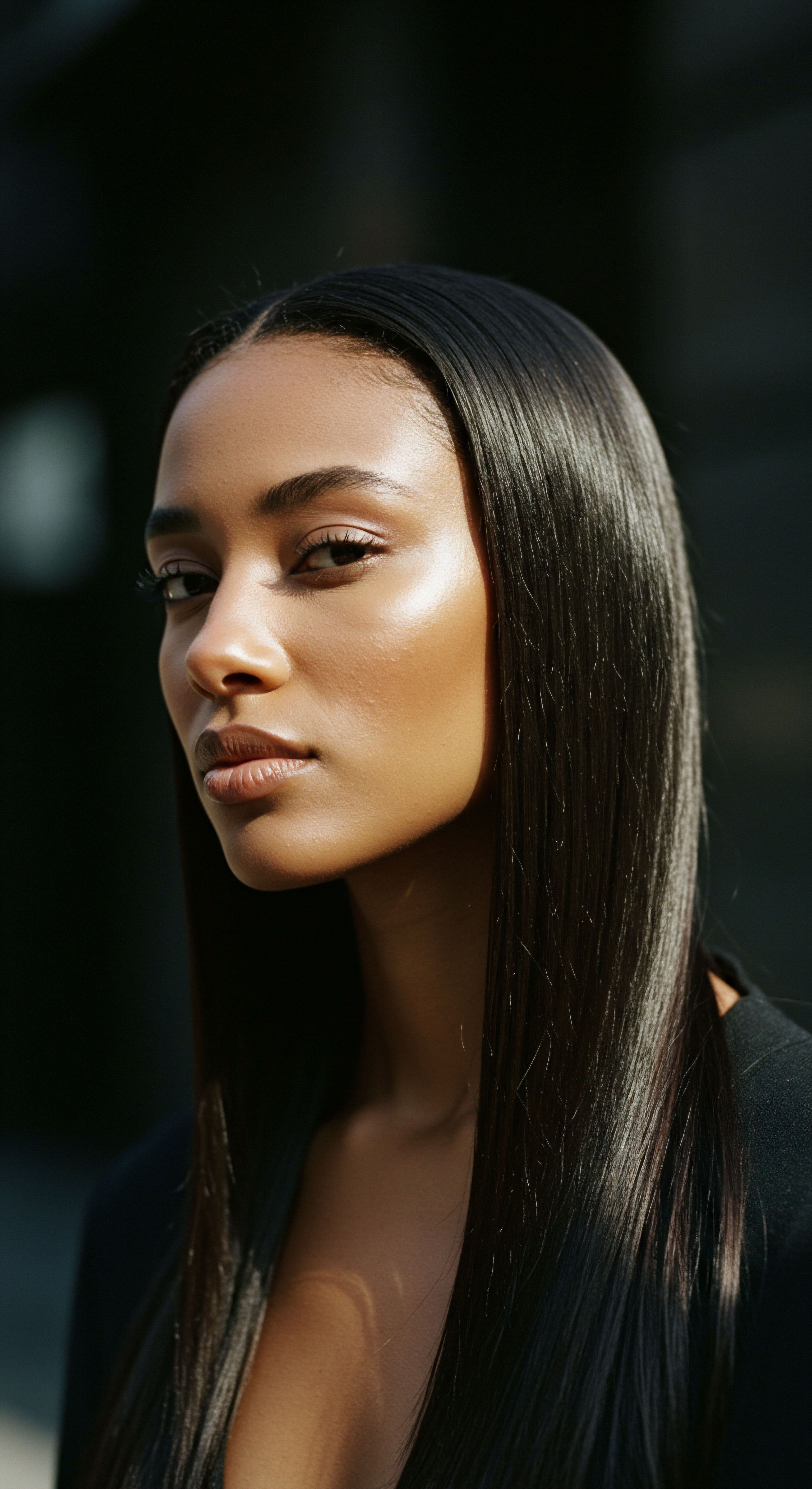
The Era of Conformity and Chemical Alteration
The 19th and 20th centuries witnessed the widespread adoption of chemical relaxers and hot combs within Black communities. These tools and treatments offered a means to achieve the straightened hair that was increasingly presented as the benchmark for acceptability in schools, workplaces, and broader society. This pursuit of conformity, while offering a semblance of social mobility, came at a considerable cost, both to hair health and to the psychological well-being of individuals. The societal pressure to assimilate through hair choices became a deeply personal and often painful negotiation.
The description of “good hair” versus “bad hair” became a pervasive cultural shorthand, directly linking hair texture to perceived value and social standing. This internal categorization, rooted in external pressures, profoundly impacted self-perception. It is a testament to the enduring power of these historical standards that such distinctions, though now widely challenged, continue to reverberate in some corners of collective consciousness.

Styling as Survival ❉ Adapting to Dominant Norms
For many generations, adapting one’s hair to align with dominant standards was not simply a matter of personal preference; it was a pragmatic strategy for survival and advancement. Whether in the professional sphere or educational institutions, adhering to a straightened aesthetic could mitigate overt discrimination. This forced adaptation, however, underscored a profound irony ❉ to be seen as “professional” or “presentable,” one often had to suppress a visible aspect of their natural heritage.
The meaning of “professional” hair became narrowly defined, leaving little room for the inherent versatility and beauty of textured strands. This period, therefore, clarifies how historical hair standards were not merely aesthetic preferences but were deeply intertwined with economic opportunity and social acceptance.
| Practice Hot Combing |
| Period of Prominence Late 19th Century – Mid 20th Century |
| Purpose/Societal Pressure To straighten hair for a smoother, more "acceptable" appearance. |
| Impact on Textured Hair Risk of heat damage, breakage, and scalp burns. |
| Practice Chemical Relaxers |
| Period of Prominence Early 20th Century – Present |
| Purpose/Societal Pressure Permanent straightening for easier management and conformity. |
| Impact on Textured Hair Chemical burns, hair thinning, irreversible damage, and health concerns. |
| Practice Pressing & Curling |
| Period of Prominence Various, often for formal occasions |
| Purpose/Societal Pressure Achieve polished, defined curls or straight styles. |
| Impact on Textured Hair Temporary alteration, but repeated heat application can lead to damage. |
| Practice These methods illustrate the historical pressures on textured hair to conform to Eurocentric ideals, often at the expense of hair health. |

Advanced
The Historical Hair Standards represent a complex, deeply layered phenomenon, extending far beyond simple aesthetic preferences to encompass intricate biological, sociological, and psychological dimensions, particularly for individuals with textured, Black, and mixed-race hair. This is not a static concept but a dynamic, often oppressive, framework of expectations that has historically sought to delineate and control personal appearance, frequently leveraging hair as a visible marker of conformity or defiance. At its most sophisticated level, this definition unpacks the historical evolution of hair as a site of power, resistance, and identity formation, revealing how beauty ideals were weaponized to maintain social hierarchies and how, conversely, hair became a powerful emblem of liberation and self-determination. The historical context clarifies the pervasive influence of Eurocentric ideals, which, through colonialism and systemic racism, elevated straight hair as the universal standard of beauty and professionalism, simultaneously devaluing and pathologizing natural Black hair textures.
A thorough analysis reveals that these standards were rarely organic cultural developments for Black communities; instead, they were often externally imposed, serving to reinforce a racialized caste system. The very concept of “good hair” emerged as a tool of internal colorism, where proximity to whiteness, signified by looser curls or straighter strands, afforded greater social and economic advantage. This systemic devaluing had profound, long-term consequences, impacting not only individual self-esteem but also contributing to collective trauma and the perpetuation of discriminatory practices in education, employment, and public life. The explication of Historical Hair Standards, therefore, necessitates a critical examination of how dominant cultures constructed and enforced these norms, often through overt policies and subtle biases, to marginalize and control specific populations.
Historical Hair Standards, particularly for textured hair, are a dynamic framework of externally imposed ideals, often rooted in Eurocentric norms, that have profoundly shaped identity, perpetuated systemic discrimination, and fueled movements of resistance.
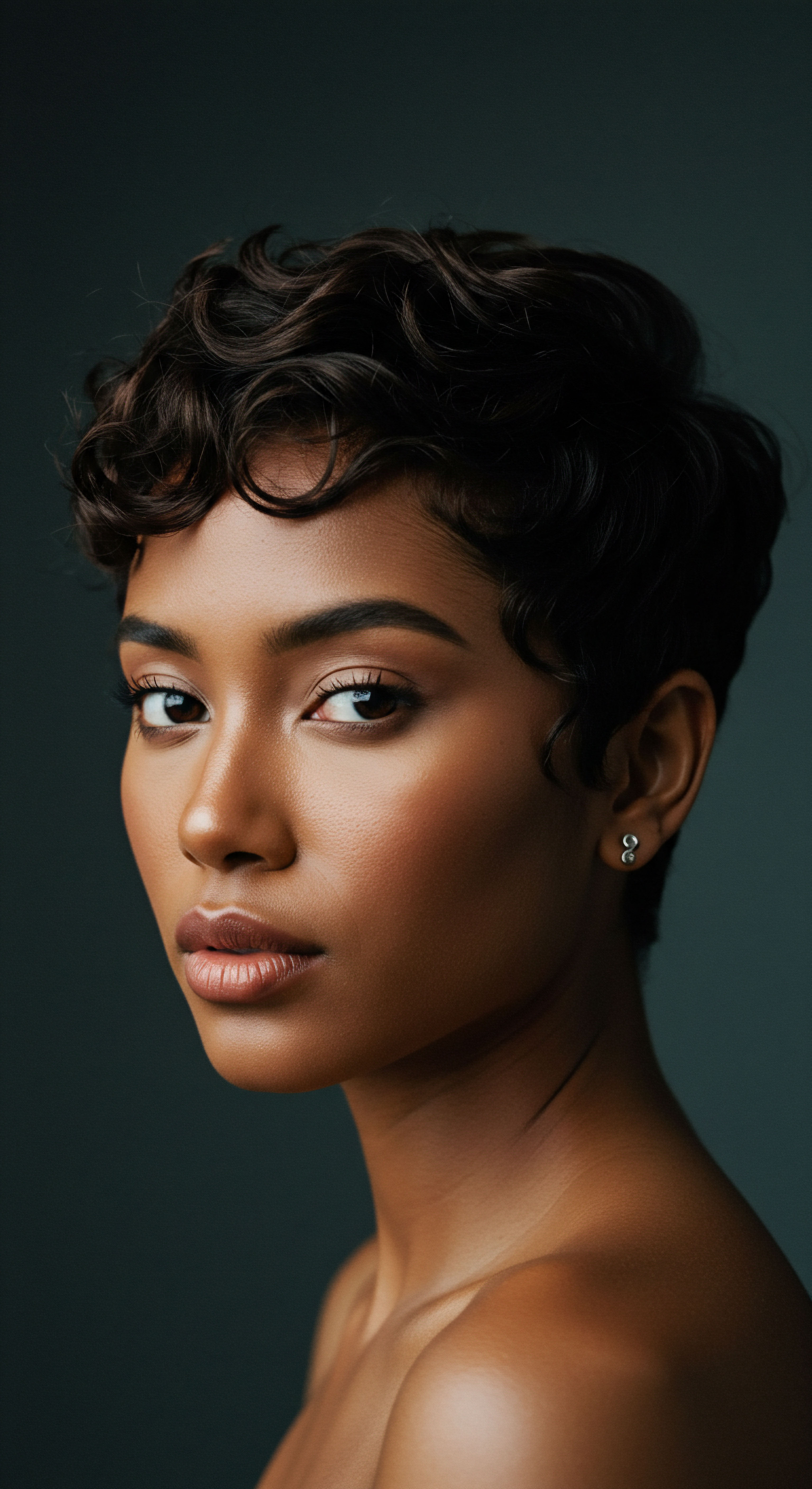
The Genesis of Bias ❉ Colonialism and Hair Hegemony
The origins of modern hair bias are inextricably linked to the history of colonialism and the transatlantic slave trade. European colonizers, in their quest for domination, systematically dismantled indigenous cultural practices, including those surrounding hair. African hair, once a vibrant expression of lineage, status, and spirituality, was re-labeled as “nappy,” “woolly,” or “unclean” by enslavers and colonizers.
This derogatory designation served a dual purpose ❉ it dehumanized enslaved Africans, justifying their brutal treatment, and simultaneously established a new aesthetic hierarchy where European features, including straight hair, were deemed superior. This historical narrative clarifies how the very terminology used to describe textured hair today carries the weight of centuries of imposed inferiority.
This ideological subjugation extended beyond physical appearance, impacting the psychological landscape of generations. The psychological consequences of internalizing these external valuations are considerable, leading to what some scholars describe as “internalized hatred” of one’s natural self. The legacy of this period means that even after formal slavery or colonial rule ended, the blueprint for acceptable hair remained largely Eurocentric, requiring immense effort and often harmful practices for Black individuals to conform.
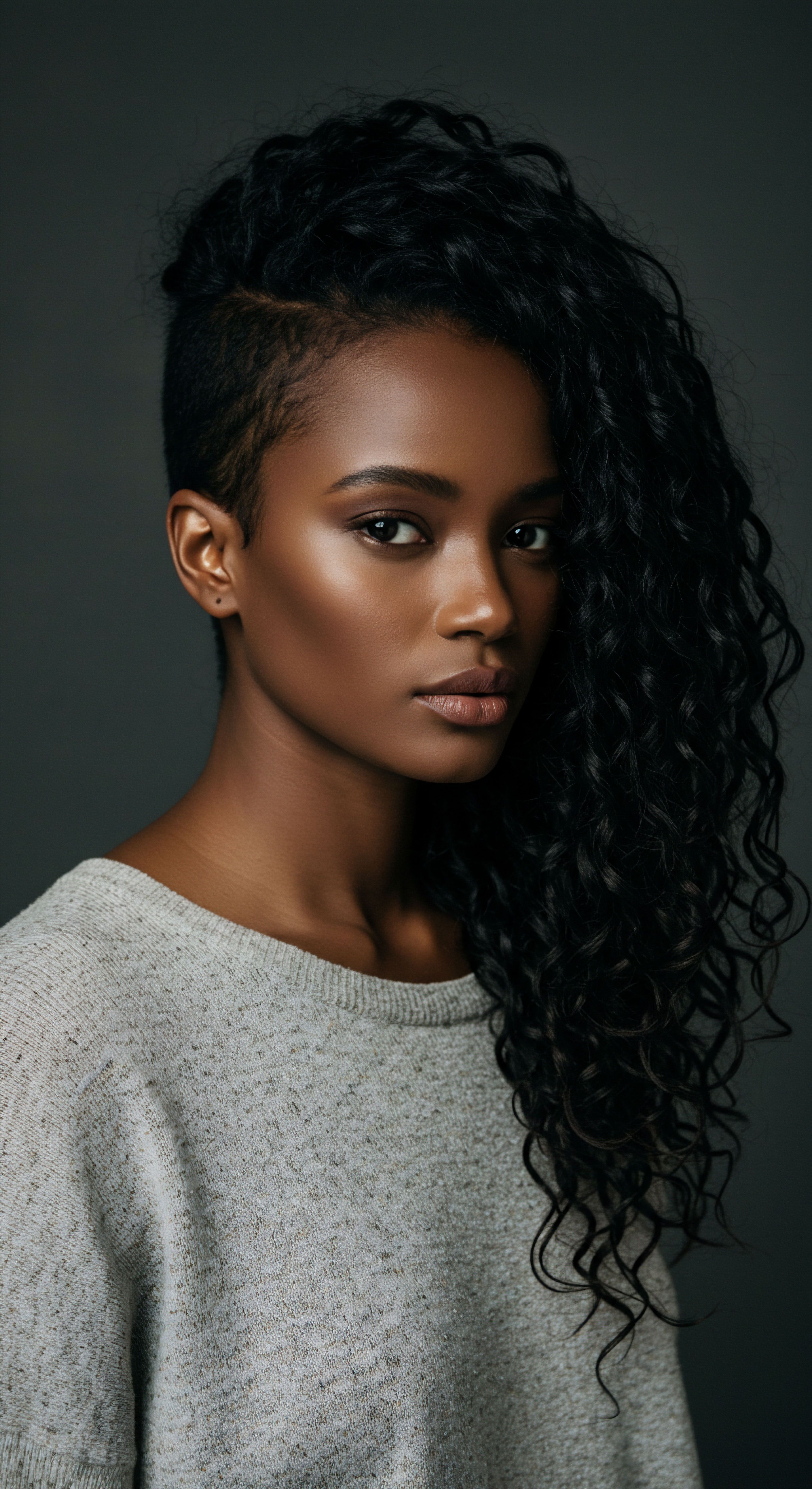
Societal Imposition ❉ Education and Employment as Battlegrounds
The pervasive influence of Historical Hair Standards is vividly demonstrated in institutional settings, where hair became a literal barrier to opportunity. In schools, policies dictating “neatness” or “professionalism” disproportionately targeted natural Black hairstyles, leading to disciplinary actions, missed educational opportunities, and early experiences of discrimination for Black children, This early exposure to hair bias shapes self-perception from a tender age. A compelling example from recent research underscores this profound impact ❉ a 2021 CROWN Research Study for Girls revealed that 53% of Black Mothers Reported Their Daughters Experienced Racial Discrimination Based on Hairstyles as Early as Five Years Old, with 86% of Black Children in Majority-White Schools Facing Such Discrimination by the Age of 12. This striking data point illustrates the deeply ingrained nature of these historical standards, which continue to inflict harm on the youngest members of the textured hair community, shaping their self-esteem and sense of belonging long before they enter the professional world.
In the workplace, these standards translated into formal and informal grooming policies that implicitly or explicitly favored straightened hair, positioning natural textures as “unprofessional” or “unkempt”, Black women, in particular, have faced significant professional hurdles, including being denied job interviews, promotions, or even being sent home from work due to their natural hair, The economic and career consequences are substantial, forcing many to choose between authentic self-expression and professional advancement. The continued existence of such biases, despite growing awareness, speaks to the enduring power of historical standards that equate Eurocentric hair with competence and reliability.
The societal and economic ramifications extend further, influencing consumer behavior and health outcomes. Black consumers historically spend significantly more on hair care products, including chemical relaxers, to achieve desired textures, This financial burden is compounded by potential health risks associated with certain straightening agents, which have been linked to increased risks of uterine and breast cancer. This highlights a disturbing intersection where historical beauty standards not only impact self-perception and career but also carry tangible, adverse health implications, a critical aspect of their enduring legacy.

The Resurgence of Self-Acceptance ❉ The Natural Hair Movement
The late 20th and early 21st centuries have witnessed a powerful counter-movement challenging these Historical Hair Standards ❉ the natural hair movement. This contemporary shift represents a profound rejection of imposed beauty ideals and a reclamation of ancestral heritage. It signifies a conscious decision to celebrate the inherent beauty and versatility of textured hair, moving away from chemical alterations towards practices that nourish and honor natural curls, coils, and waves. This movement is not merely a trend; it is a cultural and political statement, a deliberate act of decolonization in the realm of personal identity.
The natural hair movement underscores the significance of hair as a symbol of identity and resistance. It has spurred a re-education about textured hair care, fostering a community dedicated to sharing knowledge, celebrating diverse hair types, and advocating for legal protections against hair discrimination, such as the CROWN Act in the United States, This collective endeavor demonstrates a sophisticated understanding of how historical standards continue to influence contemporary experiences, prompting purposeful action to redefine beauty on one’s own terms.
The implications of this movement are far-reaching, extending beyond individual hair choices to broader societal shifts. It challenges the very definition of “professionalism” and “beauty,” urging institutions to dismantle discriminatory policies and embrace true diversity. The success of this movement hinges on an ongoing re-evaluation of historical biases, fostering an environment where all hair textures are not merely tolerated but genuinely celebrated as expressions of unique heritage and individual beauty. The ongoing journey involves confronting the lingering echoes of historical subjugation and consciously constructing new narratives of hair positivity and acceptance.
This deep dive into Historical Hair Standards reveals them as far more than quaint historical footnotes. They are active, shaping forces that have dictated worth, limited opportunity, and impacted well-being, particularly for Black and mixed-race individuals. Understanding their complex lineage and pervasive influence is a vital step toward dismantling the remaining vestiges of hair discrimination and fostering a world where every strand is celebrated for its authentic beauty. The enduring relevance of these historical frameworks clarifies why the journey toward hair liberation remains a critical component of broader social justice movements.
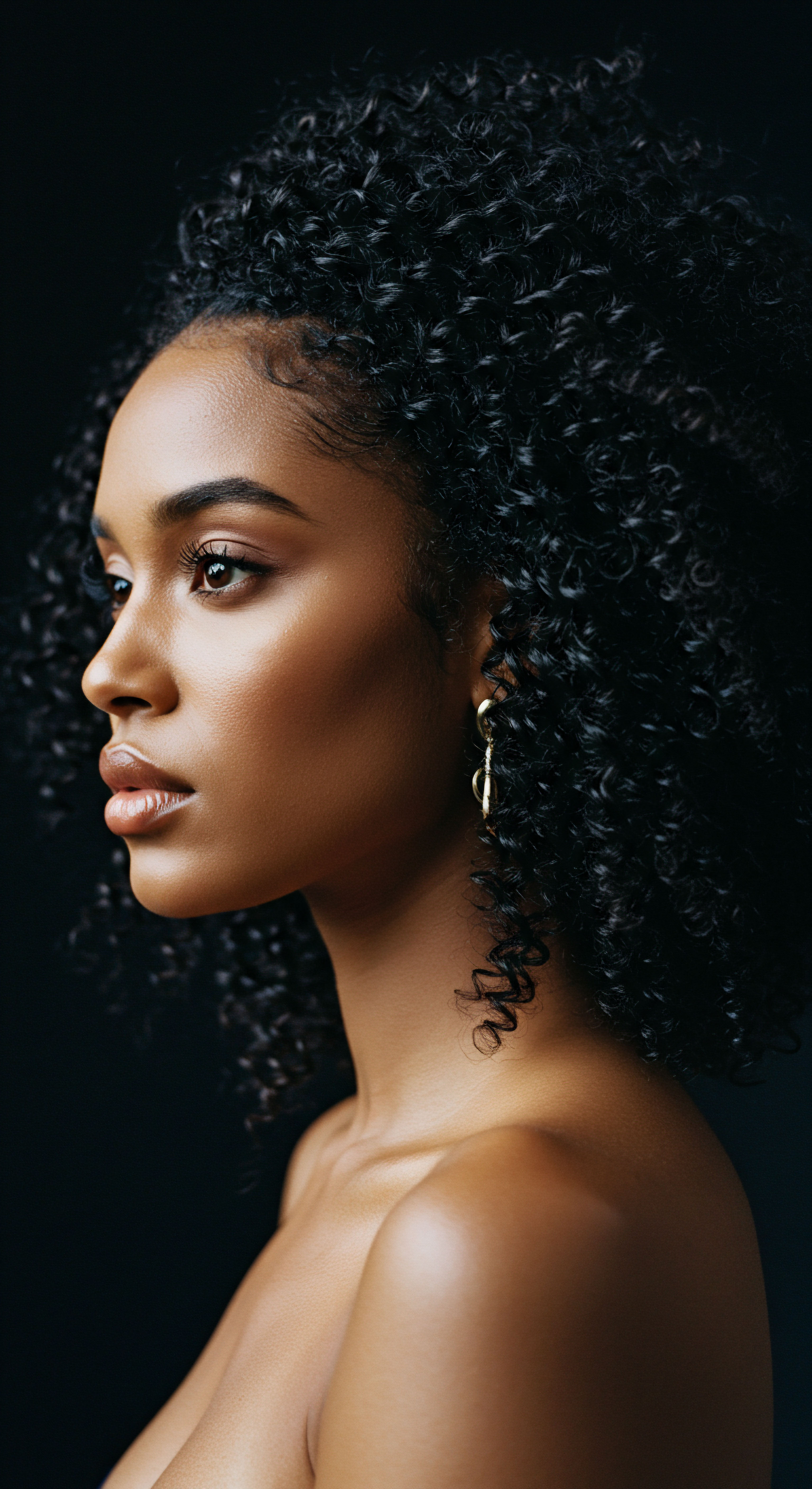
Reflection
As we journey through the intricate landscape of Historical Hair Standards, a profound realization settles upon us ❉ hair, in its myriad forms, has always been a quiet, yet powerful, testament to human resilience and cultural memory. For textured hair, especially within Black and mixed-race communities, this historical reflection is not merely an academic exercise; it is an invitation to acknowledge the enduring spirit that has, for centuries, found ways to express beauty, identity, and defiance amidst restrictive dictates. We recognize the silent battles fought, the painful compromises made, and the joyous reclamations celebrated through each curl, coil, and wave.
This understanding calls us to look inward, to consider how the echoes of these past standards might still whisper in our self-perceptions, and then, to look outward, to champion a future where the unique heritage and intrinsic beauty of every hair texture is not just accepted, but deeply revered. The narrative of hair, then, becomes a narrative of liberation, a gentle yet firm assertion that authenticity, in all its varied expressions, is the most profound standard of all.
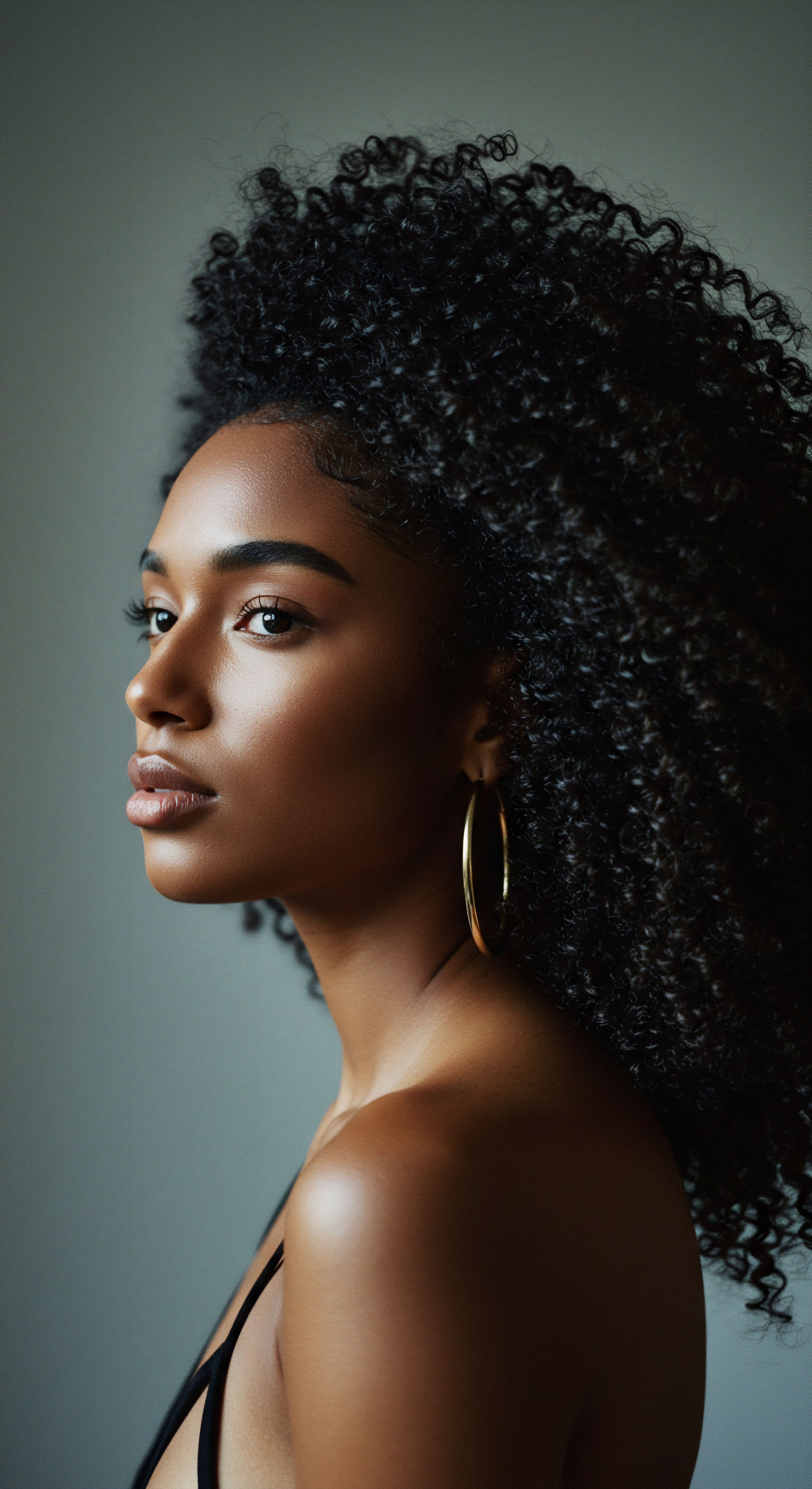
References
- Byrd, Ayana D. and Lori L. Tharps. Hair Story ❉ Untangling the Roots of Black Hair in America. St. Martin’s Griffin, 2014.
- Banks, Ingrid. Hair Matters ❉ Beauty, Power, and Black Women’s Consciousness. New York University Press, 2000.
- Cobb, Jasmine Nichole. New Growth ❉ The Art and Texture of Black Hair. Duke University Press, 2023.
- Dabiri, Emma. Twisted ❉ The Tangled History of Black Hair Culture. Harper Perennial, 2020.
- Mbilishaka, N. A. Clemons, T. R. Hudlin, M. Warner, K. & Jones, A. (2020). “Hair Discrimination, Health, and Well-Being.” Journal of the National Medical Association, 112(5), 591-596.
- McGill Johnson, A. Godsil, R. D. MacFarlane, K. Tropp, L. R. & Atiba Goff, P. (2017). “The ‘Good Hair’ Study Results.” Perception Institute.
- Sims, J. N. Pirtle, W. N. & Johnson-Arnold, S. (2020). “The Natural Hair Bias in Job Recruitment.” Social Psychological and Personality Science.
- Setlaelo, S. (2022). “Black Women’s Hair Consciousness and the Politics of Being.” Eidos A Journal for Philosophy of Culture, 6(3), 24-43.
- Essel, O. Q. (2021). “Conflicting Tensions in Decolonising Proscribed Afrocentric Hair Beauty Culture Standards in Ghanaian Senior High Schools.” International Journal of Research and Scientific Innovation, 8(3), 116-122.
- Dove CROWN Research Study for Girls. (2021). The Official CROWN Act.